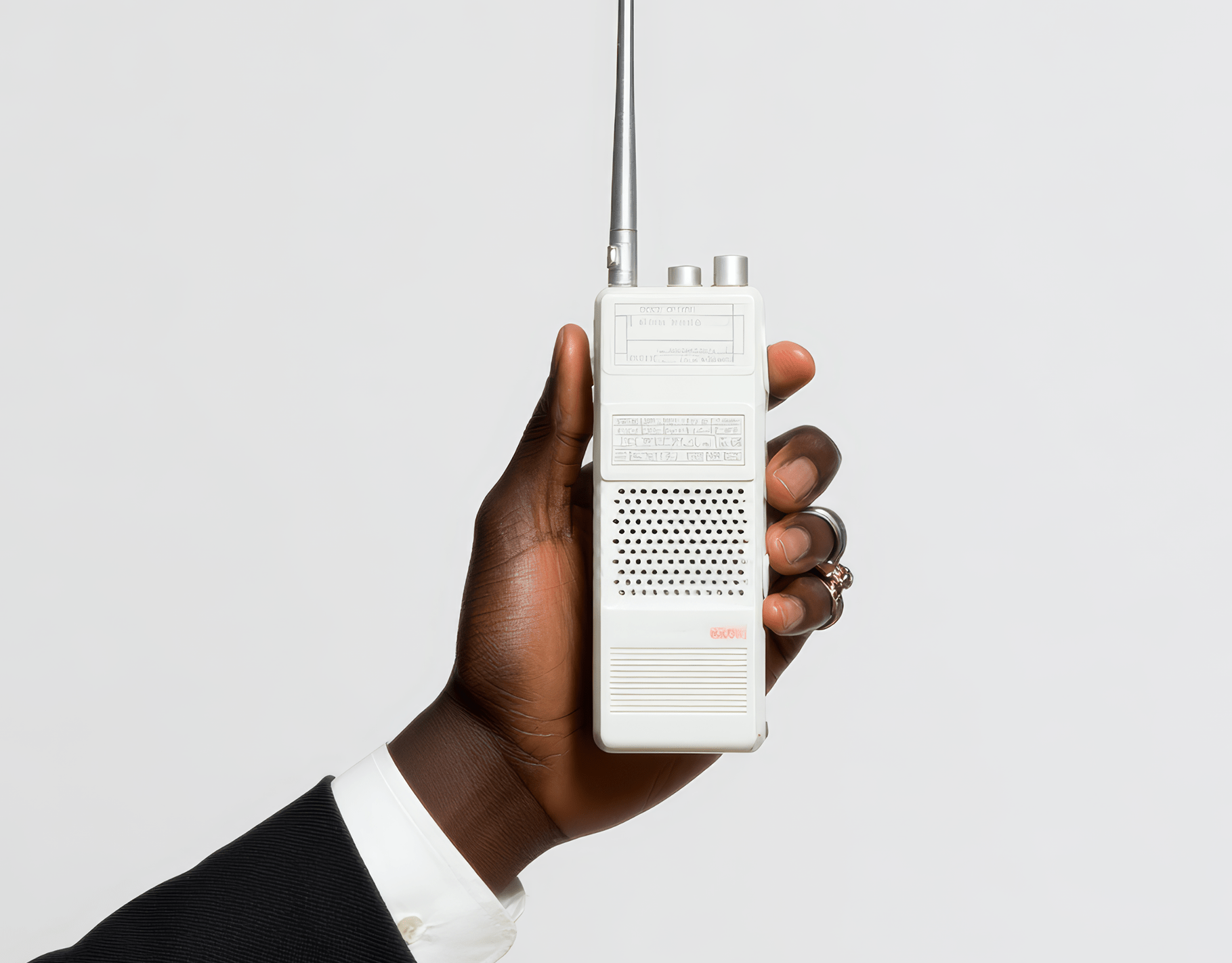There's this quiet frustration that builds when you watch certain brands effortlessly command loyalty while you're still fighting for attention. You deliver quality, you solve problems, you genuinely care about your customers. But somehow, other brands get the kind of devotion that feels almost irrational.
What you're seeing is the difference between brands that customers use and brands that customers identify with. When someone sees your brand as part of who they are, they stop comparing you to competitors because you're no longer in the same category in their minds.
This transformation happens through six specific psychological dimensions called the brand identity prism. When you align these elements intentionally, you stop competing on features and start building the kind of connection that makes customers choose you without thinking twice.
What is the Brand Identity Prism and Why It Matters
"The aim of marketing is to know and understand the customer so well the product or service fits him or her and sells itself." — Peter Drucker, Management consultant, educator, and author
Created in 1996 by Jean-Noël Kapferer, the brand identity prism helps businesses build real connections with their customers.
Think of it as a blueprint that goes way beyond just logos and colors - it's a complete framework for creating a brand identity that actually means something to people.
What is the Brand Identity Prism?
The brand identity prism organizes your brand into six interconnected elements that work together to create something humans can relate to. When done right, it helps companies build a brand that customers instantly recognize and feel emotionally connected to.
The 6 Core Elements of Kapferer's Brand Identity Prism

The model breaks down into six key pieces:
- Physique - The stuff you can see and touch - your logo, packaging, colors, and overall design
- Personality - Your brand's unique character and how it communicates
- Culture - The values and beliefs that drive everything you do
- Relationship - How you interact with and treat your customers
- Reflection - The ideal customer you want to attract
- Self-Image - How customers see themselves when they use your brand
These pieces fit together in a specific way - physique, relationship, and reflection make up the external face of your brand, while personality, culture, and self-image work behind the scenes.
How the Prism Creates a Cohesive Brand Narrative
The magic happens when you balance two key things: how you want people to see your brand (what Kapferer calls the "picture of sender") and how customers want to see themselves through your brand (the "picture of receiver").
When you nail this balance, everything clicks - your external message matches your internal values, creating a story that makes sense no matter where customers encounter your brand.
The framework also gives you a roadmap for staying consistent while still being able to adapt when markets change.
And in today’s landscape, that adaptability extends beyond people — it includes how your brand is interpreted within emerging AI-driven environments. When your story holds together across both human and algorithmic contexts, you create an identity that’s understood wherever it’s encountered.
Why Strong Brands Need All Six Elements Working Together
Here's what Kapferer says about it: "Strong brands are capable of weaving all aspects [of the prism] into an effective whole in order to create a concise, clear, and appealing brand identity".
Getting all six elements working together does some powerful things for your brand:
- Helps you stand out in crowded markets
- Creates emotional bonds that go beyond just buying and selling
- Keeps your message consistent everywhere
- Lets you stay relevant while staying true to who you are
We’ve used the Brand Identity Prism in our own client work as a lens to bring depth and coherence to the brands we build.
From culture to personality, we make sure each piece speaks the same language. And when that alignment clicks, our clients feel it. Their audiences feel it. It becomes more than a framework, it becomes identity in motion.
How Apple Uses the Brand Identity Prism to Dominate Consumer Loyalty
"Loyal customers, they don't just come back, they don't simply recommend you, they insist that their friends do business with you." — Chip Bell, Customer service expert and bestselling author
Think about the last time you walked into an Apple store.
Everything from the minimalist design to the way employees interact with customers feels distinctly "Apple."
Apple's Physical Design Language: Minimalism That Speaks Volumes
You'll notice Apple's physical identity the moment you pick up any of their products. Their minimalist design isn't just about looking good - it's a carefully crafted strategy that puts simplicity and function first.
Every product, from the iPhone to the MacBook, shares the same clean lines and intuitive interfaces that make Apple instantly recognizable.
What's really clever is how Apple maintains this consistency across their entire ecosystem. Pick up an iPhone, switch to an iPad, or open a MacBook - the experience feels familiar and natural every time. This careful attention to physical design creates a comfort level that keeps customers coming back.

How Apple Activates All Six Elements of the Brand Identity Prism
There's a moment when you realize Apple isn't just selling technology. You're standing in that minimalist store, holding a device that feels almost weightless, and something clicks. This isn't about specs or features. It's about who you become when you use it.
Apple doesn't just talk about brand, it lives it.
Every touchpoint, from the first glimpse of packaging to years of customer service, reinforces a single identity.
Here's how they activate each element of Kapferer's Brand Identity Prism to create that feeling of belonging to something bigger.
1. Physique
Walk into any Apple store and you immediately understand their visual vocabulary. Clean white packaging that slides open like a jewelry box. The bitten apple logo that needs no explanation. Aluminum devices that feel substantial yet effortless. Storefronts with more glass than walls.
These aren't just design choices, they're signals. They whisper clarity, modernity, and ease before you even power on the device. Think about that iPhone unboxing ritual. The smooth resistance of the packaging, the pristine finish revealed layer by layer. It's theather, and the message is clear: this is a premium experience.
2. Personality
Apple's brand personality emerged from a simple truth: the best technology should feel like magic, not work. The legendary "Think Different" campaign didn't just sell computers, it sold permission to be different. To create. To rebel against the status quo.
This personality flows through everything. Product keynotes that feel like TED talks.
Website copy that's confident without being arrogant. Marketing that celebrates the creators, not the creation. The tone is consistent: we're not just building products, we're building the future.
3. Culture
Behind the sleek exterior lives an organizational culture built around expertise, not hierarchy. Teams organize around what they know best, not traditional corporate silos. This structure fuels their obsession with innovation and quality, creating a mentality that infuses every product and service.
This culture is what enables Apple to create products that just work. No manual required. No setup wizard. No troubleshooting. The internal obsession with perfection becomes the external experience of effortlessness.

4. Relationship
Apple builds relationships differently. Instead of customer service, they offer Genius Bars.
Instead of products, they create ecosystems. iPhone talks to Apple Watch talks to Mac talks to iCloud, all seamlessly, all invisibly.
The relationship feels personal because it is. You're not just buying a phone, you're joining a community that gets special treatment. Software updates that arrive like gifts. Support that feels like mentorship. An ecosystem that makes you feel taken care of and elevated.
5. Reflection
Look at Apple's advertising and you see their ideal customer: creative, modern, empowered. A leader, not a follower.
The ads showcase creators, students, entrepreneurs, and change makers.
Never passive consumers, always active builders.
The message resonates because it's aspirational yet attainable. This product is for people doing important, meaningful things. For people who see technology as a tool for creation, not consumption.
6. Self-Image
Here's where Apple's genius truly shows. They don't just sell to who you are, they sell to who you want to become. Buying an iPhone or MacBook isn't just a functional choice, it's a statement of taste, capability, and status.
Apple makes you feel like you're part of the future. Not just using technology, but mastering it. The device becomes an extension of your identity, a signal of your values, a reflection of your aspirations.
Creating Your Brand Identity Prism: A Strategic Framework
Successful competitors aren't necessarily better at what they do, but people gravitate toward them anyway. They have coherence that makes every interaction feel intentional. This coherence comes from systematically building a brand identity across six dimensions of human connection.
.png)
Step 1: Define Your Brand's Physique
Your brand's physique is how it feels across all senses. This creates the immediate, visceral impression before conscious thought kicks in.
Audit every physical touchpoint: logo, packaging, website, office space, business cards. What do they communicate before anyone reads a word? Identify patterns in your natural design preferences and create your unmistakable physical signature.
Step 2: Discover Your Brand's Personality
If your brand walked into a room, what would people notice about its character? Look at your company's origin story, founder's communication style, and team's natural problem solving approach. Are you the wise advisor, innovative rebel, reliable friend, or ambitious challenger?
Define how you naturally communicate at your best: formal or casual, direct or diplomatic, humorous or serious. Identify your authentic emotional bandwidth.
Step 3: Articulate Your Brand's Culture
Culture is what happens when nobody's watching. It's the beliefs and values that guide decisions, especially difficult ones.
What do you believe about your industry that's fundamentally different from everyone else? What will you never compromise on? How do you celebrate success and handle failure? These cultural expressions become part of what customers experience.
Step 4: Design Your Brand's Relationship
This is how you connect with customers; not just what you say, but how you make them feel throughout the entire relationship.
Choose your relationship archetype: mentor, partner, entertainer, or protector. Create your service philosophy around how you want people to feel when they interact with your brand. Design your natural cadence for staying connected.
Step 5: Define Your Brand's Reflection
Reflection is how you portray your ideal customer in marketing and messaging. This isn't demographics; it's the aspirational image you're selling.
Who does your ideal customer want to become? What identity are they building? How does your brand play a role in their success narrative? Understanding their broader value system helps you connect on deeper levels.
Step 6: Understand Your Brand's Self Image
This is the most powerful element: how your customers see themselves when they choose your brand. It's the internal identity shift that happens with each interaction.
When someone chooses your brand, what story do they tell themselves? What identity do they step into? Your brand becomes part of how people communicate who they are to the world.
Step 7: Align All Six Elements
When all six elements reinforce each other, the magic happens. Your physique should reflect your personality. Your culture should support your relationship style. Your reflection should align with your customer's self image.
Test for coherence: Do all six elements tell the same story? Create simple frameworks that help your team make brand consistent decisions. Build regular check ins to ensure alignment as your business evolves.
The Compound Effect
When you systematically build across all six elements, your brand stops being a collection of marketing elements and becomes a living identity that people connect with on multiple levels. The coherent integration of physique, personality, culture, relationship, reflection, and self image creates magnetic pull that transforms casual customers into devoted advocates.
Your Brand Identity Prism becomes the foundation for every decision, interaction, and evolution of your brand. It's the architecture of lasting customer loyalty.
FAQs
Q1. What is the Brand Identity Prism and why is it important?
The Brand Identity Prism is a marketing framework with six interconnected elements that help businesses create a cohesive brand identity. It's important because it enables companies to build deeper emotional connections with customers, differentiate themselves in crowded markets, and maintain consistency across all communication channels.
Q2. How does Apple use the Brand Identity Prism to build customer loyalty?
Apple leverages all elements of the Brand Identity Prism, including its minimalist design philosophy, innovative culture, and "Think Different" personality. This holistic approach creates a consistent brand experience that resonates with customers, fostering strong emotional connections and unshakeable loyalty.
Q3. How did Burberry transform its brand identity?
Burberry revitalized its 150-year-old visual identity, embraced digital innovation to rebuild customer relationships, and shifted its brand associations from "chav" culture to luxury consumers. This transformation involved strategic changes to its logo, digital presence, and brand ambassadors to reclaim its luxury positioning.
Q4. What are the six elements of the Brand Identity Prism?
The six elements of the Brand Identity Prism are Physique (tangible aspects), Personality (brand character), Culture (values and beliefs), Relationship (customer interactions), Reflection (ideal target audience portrayal), and Self-Image (how consumers see themselves through the brand).
Q5. How can a company create its own Brand Identity Prism?
To create a Brand Identity Prism, a company should follow a 5-step process: audit current brand elements, map the ideal customer's self-image, define the brand's unique personality and culture, create alignment across all six elements, and implement and measure loyalty metrics. This process helps build a cohesive brand identity that resonates with the target audience.














